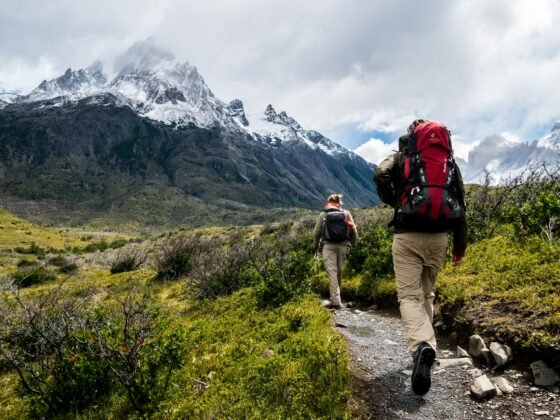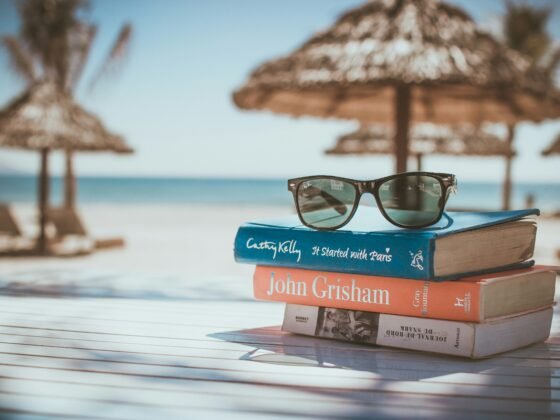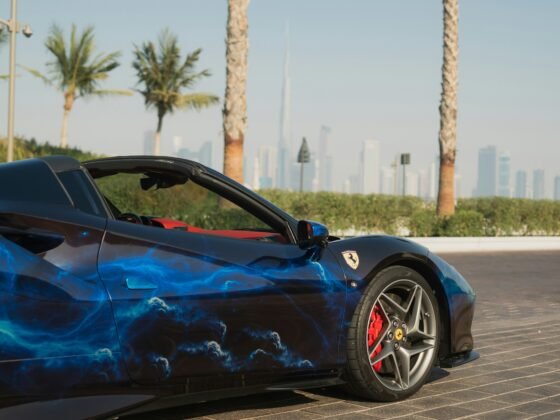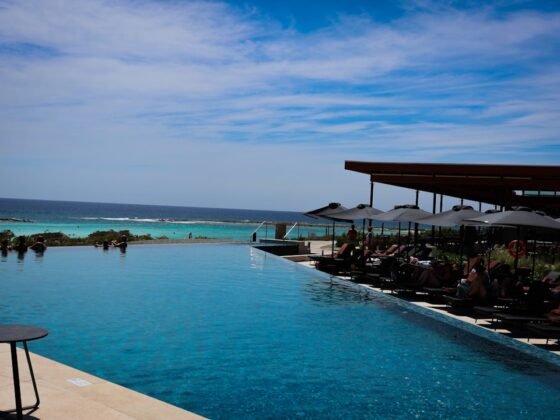Chile Adventure Travel Guide: Ideas and Inspiration
PureTravel Says: “The Republic of Chile is the long narrow country, which runs down the West Coast of South America. Chile consists mainly of a coastal strip between the Andes and the Pacific Ocean. Its coastline is 6,435km (3,998 miles) long. Chile is bordered by Peru in the north, Bolivia in the northeast and Argentina in the east. The capital city of Chile is Santiago, a beautiful city to visit. At the southernmost tip it borders the Drake Passage which leads around Cape Horn to the eastern side of South America. Although it is long, Chile only averages about 109 miles wide. It has a population of 16.7 million which mainly follow the Catholic faith. Chile has a well-equipped and trained army, navy and air force. The Chilean national police, or carabineros, now come under the control of the Defense Ministry. Chile is considered a safe country for visitors. Incidents of theft are rare, and physical assault is almost unheard of among these gentle people.”
-----------------------------------------------------------
Highlights
Culture - The country of Chile has a reasonably stable and prosperous way of life. It leads many other countries of South America with its low poverty rates, human development and economic freedom, low perception of corruption and good standards of living.
Chilean music is an assortment of sounds including pop music, folk music and classical tunes. The national dance is the Cueca and is danced on national holidays by Chileans dressed in colorful national costume.
Literature is strong in Chile. They call it the ‘Pais de Poetas’ or country of poets. The most famous poet was Pablo Neruda who won the Nobel Prize for Literature back in 1971. The award was considered controversial because of his political beliefs.
Traditional Chilean food includes empanadas, which are small pastries with a savoury filling and cazuela, which is a Spanish type of soup, made of meat and vegetables.
Chile’s main national sport is soccer, or football. The national team often reaches the finals in various international games. It is also very successful in international tennis. Riding and rodeo are also popular national sports, particularly in the rural areas. Polo on horseback is played professionally as well.
The main language spoken in Chile is Spanish and the currency is the Chilean peso. However, US dollars are often accepted in tourist areas. Over 2 million visitors go to Chile each year, mainly from Argentina and the United States. Cruises are a popular way for tourists to see the many attractions that Chile has to offer.
Scenery - Chile has a huge variance in climate due to its extensive length and varying altitudes. The northern Atacama Desert has great mineral resources, including copper and nitrates. Most people inhabit the Central Valley around the city of Santiago. This is traditionally the historical center of Chile since the late 19th century. Southern Chile has forests and farmland. It also has some inland lakes and snow-capped volcanoes, which make it very scenic. At the very southern tip there are many fjords and inlets creating a watery passage between the islands. Chile’s boundaries extend to the remote Easter Island, the eastern islands of Polynesia and Robinson Crusoe Island, more than 373 miles offshore.
-----------------------------------------------------------
When to Go
The most popular months for tourists to visit Chile are during the summer months. As it lies mainly in the Southern Hemisphere, the best months are from November to February, particularly around Cape Horn and the colder southern regions.
Chile extends through 38 degrees of latitude and has at least 7 climates. The north is desert and alpine tundra and glaciers extend to the east and southeast. Easter Island is sub-tropical; central Chile has a Mediterranean climate and the south is Oceanic.
Santiago is in a basin and is pleasant in most months. The hottest months are January and February when 35C (95F) may be reached. Winters are cooler, but rarely see freezing temperatures. The wettest months are June and July with approx. 3 inches (76mm) of rain.
-----------------------------------------------------------
Top Tips
- Always carry bottled water with you when you travel.
- Check whether an entry visa is required, some countries do not need to apply for a visa (such as Argentina, Australia, Brazil, Colombia, Ecuador, France, Mexico, New Zealand, Peru, Spain, Turkey, UK)
- Always take a sun hat and sunscreen. Even though temperatures are cool in the mountains, the sun is at its most intense at the Equator.
- Carry a Spotter’s Guide to identify the many animals and birds you will see.
- Never hike, climb or trek by yourself. There are countless dangers and you may need help.
-----------------------------------------------------------
Holidays In Focus
-----------------------------------------------------------
Culture
Santiago - A beautiful city to visit whilst in Chile. It is the capital city and is situated in the Central Valley, at a height of 520m (1,700 feet) above sea level. Although it is the administrative capital, many legislative meetings are held in Valparaiso, which is a huge port.
Santiago is in a basin surrounded by high volcanic mountain peaks. Cerro El Plomo is the highest and is 6,570m (21,555 feet) high. The hottest months are January and February when 35C (95F) may be reached. Winters are cooler, but rarely see freezing temperatures. The wettest months are June and July with approximately 3 inches (76mm) of rain.
San Pedro de Atacama – A popular area with visitors who appreciate the Inca architecture, the small church and the lakes.
-----------------------------------------------------------
Architecture
Santiago has a wealth of fine architecture dating back to the days when Portugal ruled. The ornate detail, statuary and grand entranceways are very European. There are several museums here; the museum of archaeology, the museum of the San Francisco monastery, the fine arts museum, the national history museum and many more. If you look carefully at the buildings, you will see earthquake damage from past tremors.
There are many parks to visit including a sculpture park and a metropolitan zoo. The Central Station is worth visiting as it was built by Gustave Eiffel, who also built the famous Eiffel Tower. The building is made totally of metal and is a national monument. A similar metal church also exists in Arica in northern Chile, again built by Eiffel completely from steel. The local customs house in Arica was similarly constructed by Eiffel and was then shipped out to Chile.
The Downtown Square or ‘Plaza de Armas’ is quite impressive along with the massive government Palace or ‘Palacio de la Moneda’. The metropolitan cathedral is also most impressive and well worth visiting. The beautiful home of Pablo Neruda, the Nobel Prize Winner for Literature, can also be visited. It is highly individual and a very popular visitor attraction.
-----------------------------------------------------------
Shopping, Business & Transport
Santiago has had massive investment poured into it making it one of the most modern metropolitan areas. There are dozens of shopping malls and many high rise buildings. Many multinational companies have headquarters in Santiago.
The city has a very efficient underground railway system for mass transit. Taxis are also easy to find. They are black with yellow roofs. Some offer a shared service, so do not be surprised if other passengers are added along the way.
-----------------------------------------------------------
Nature & Wildlife
The Valley of the Moon - The Valle de la Luna is just outside San Pedro. It is in the Atacama Desert. Stone and sand formations have been created by floods and wind until it looks like the surface of the moon. There are also dry salt lakes with white crusts and many natural colours particularly at sunset. In fact the Mars Rovers were trialled in this area before being used in space projects.
Chilean Lake District - The beautiful Chilean Lake District (Los Lagos) in Southern Chile is a surprise and a delight. Many Swiss and German families settled here during the late 19th century. They brought their own style of chalet housing, colorful gardens and decorative wooden skills. The area today is pleasant to visit, although the town of Puerto Varas is only small. In the town of Frutillar, which means strawberry, there is a beautiful church. The houses are all like alpine wooden chalets, with beautiful gardens of azaleas, roses and poppies. It is the best place for a European afternoon tea. Traditional Bavarian architecture and cuisine remain strong. Trips on the Lake Llanquihue beneath the Osorno and Calbuco volcanoes make a scenic trip.
Easter Island - Easter Island is just 163 square km (63 square miles) in size. It was named by a Dutch explorer, Jacob Roggeveen who discovered it on Easter Sunday, 1722. It is one of the most isolated islands in the world. However there is evidence of earlier settlement. The Island is uniquely scattered with Moai which are monolithic human figures carved out of rock.
The Moai dates back as far as 1250-1500 and were carved by the Rapanui people. How they were produced and transported remains a mystery. Some of these huge figures are 10 meters (33 feet) high and weigh as much as 75 tons.
Patagonia - This lovely area in Southern Chile includes several glaciers within the Laguna San Rafael National Park.
The Torres del Paine National Park has many rugged mountain peaks, glaciers, rivers and lakes. This is a popular hiking destination with many marked paths for walkers to enjoy. There are some shelters and basic services and the views are stunning. It takes 8-9 days to walk the complete National Park. Camping is only permitted at specified campsites.
-----------------------------------------------------------
Winter Sports & Adventure Activities
Skiing and Snowboarding - Snow sports are available on the high snow-covered peaks of the Central Andes. There are many internationally renowned ski resorts such as Portillo and Valle Nevado.
Modern ski resorts closer to Santiago include Farellones, Valle Nevado, La Parva and Portillo.
Surfing - Surfing is popular along the coastal towns and beaches. There are some lovely beaches for sunbathing and swimming in the warmer weather.
Hiking and Camping - The beautiful Chilean Lake District lends itself to pleasant walking in the area.
The Torres del Paine National Park in the south has rugged scenery with snow-capped mountains, glaciers and rivers to explore. There are way marked paths throughout the Park and camping sites are provided. Allow 8-9 days to complete the circuit of the park.
-----------------------------------------------------------
Chile Country Facts
- The capital of Chile is Santiago
- Local currency of Chile is the Chilean peso (CLP)
- Chile and Ecuador are the only two countries in South America that do not share a border with Brazil.
- The language in Chile is Spanish
-----------------------------------------------------------
UNESCO World Heritage Sites
- Rapa Nui National Park
- Churches of Chiloé
- Historic Quarter of the Seaport City of Valparaíso
- Humberstone and Santa Laura Saltpeter Works (on the List of World Heritage in Danger)
- Sewell Mining Town
-----------------------------------------------------------
Public Holidays, Festivals and Events
1 January - New Year's Day
March/April - Easter - Good Friday, Holy Saturday
1 May - Labour Day
21 May - Navy Day
7 June - Battle of Arica
29 June - Saint Peter and Saint Paul
16 July - Our Lady of Mount Carmel
15 August - Assumption of Mary
18 September - National holiday
19 September - Army Day
12 October - Columbus Day
31 October - Reformation Day
1 November - All Saints
8 December - Immaculate Conception
25 December - Christmas Day
31 December - Banking holiday
-----------------------------------------------------------
Travel Resources
By Julie Bowman










